TROBOLO TeraBlœm Plus
High-capacity wooden composting toilet with optional exhaust system as a complete kit.
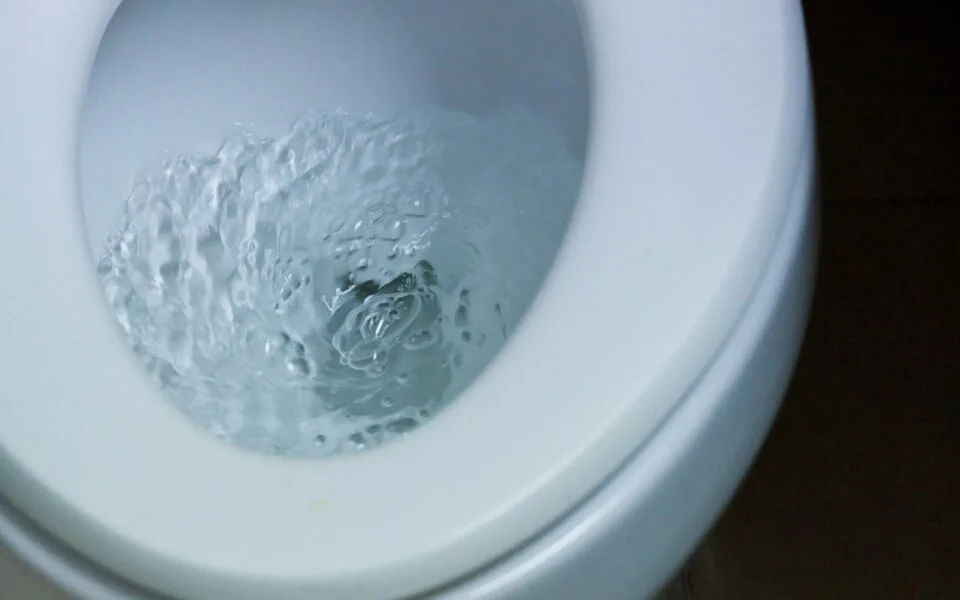
Sustainability is now firmly integrated into our everyday lives. We buy second-hand, we reuse and upcycle, we try our hand at DIY projects, we buy seasonally and regionally. All these measures ultimately aim to save as many resources as possible. Responsible use of water as a resource always plays a special role. In the following, we would like to address the question: How can I save water in everyday life and optimise my water consumption?
The UK is a water-rich country and freshwater supplies are in good condition. Data for 2014 shows that only 5.53 per cent of the freshwater in stock (groundwater and surface water) is actually pumped. So the UK is not (yet) suffering from a concrete water shortage. What these figures do not show, however, is the fact that in some places – e.g. around large cities – the groundwater level is sinking faster, with negative consequences. For example, the sinking of groundwater can lead to the drying out of wetlands and to settlement cracks on buildings.

In addition to these negative ecological impacts that excessive water consumption can cause, saving water is ultimately worthwhile for very mundane reasons. The most obvious is the relief on the wallet. And who is not happy a lower water bill?
So saving water pays off in the truest sense of the word. From a financial and ecological point of view, it makes sense to save not only water, but especially hot water. On average, every fourth litre of water consumed in is hot water, which requires energy to heat. In total, 14 percent of a household’s energy consumption is used to heat water. So if you reduce your (hot) water consumption, you not only save heating costs, but also CO2 emissions and do something good for the environment.
In the UK, water consumption has fallen steadily and significantly over the last 20 years, after initially rising to a peak of 266m³ per capita per year in the twenty years from 1980 to 2000. In the meantime, however, this value has more than halved. Thus, the total annual consumption per person was 129m³ in 2015. The average water consumption per day and person is 149 litres. With this balance, Great Britain is in the middle of the pack compared to other industrial nations. In Belgium, water consumption is only 120 litres, in Germany 122 litres, in France 148 litres, in Norway 260 litres and in the USA even 295 litres.

Water consumption in litres per capita per day in the UK averages 149 litres. According to water management estimates, this consumption is made up of the following factors (all figures are rounded):
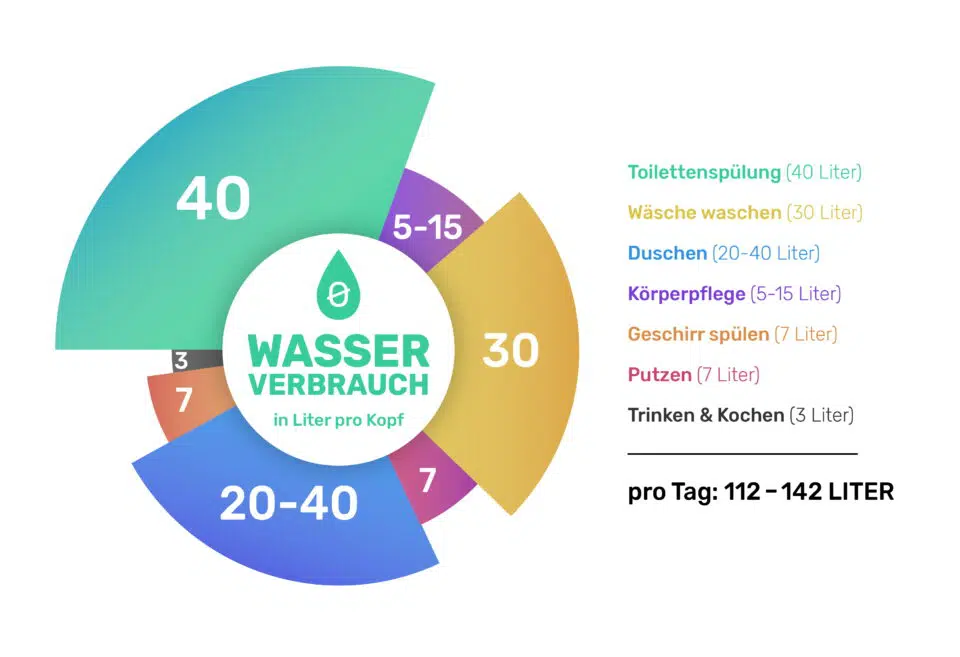
As this diagram illustrates, 33 litres of water per day are used for toilet flushing alone. This factor is eliminated completely when using TROBOLO urine-diverting toilets, which we will discuss in more detail below. You can also find a detailed description of the savings potential of TROBOLO in our section on sustainability.
Whether out of love for the environment or to lighten the load on your wallet – with these practical tricks you can reduce your water consumption quickly and reliably.
As is often the case, the small but subtle difference lies in changing your own behaviour.
Furthermore, water consumption at home can be significantly reduced if we pay attention to the ‘proper functionality of the appliances on the one hand and optimise them with water-saving functions on the other.

A few simple tricks can also save a lot of water in the garden.

Anyone who seriously considers the topic of saving water will sooner or later come across the term “virtual water”. Virtual water indicates the amount of water actually needed for the production of goods and products. A distinction is made between three types of virtual water (green, blue, grey). Green virtual water refers to water that is obtained from rainfall and soil moisture. Blue virtual water stands for the amount of water used for artificial watering. Finally, grey virtual water is affected during use (e.g. by fertilisers) and can only be reused to a limited extent.
To illustrate this classification, the virtual water balance of one kilogram of beef is presented as an example.
Beef is one of the products with the highest consumption of virtual water. On average, 15,415 litres of virtual water are needed worldwide to produce one kilogram of beef. However, 14,414 litres (93.5%) of this is green water, i.e. water that falls as rain on the forage areas. The remaining 6.5% is made up of blue and grey water. Beef production thus requires huge amounts of water (even if most of it comes from rainfall). Compared to this, relatively little water is required for a kilogram of pork or chicken (4,800 and 3,900 litres respectively). Other products require relatively little water, such as almonds, but artificial watering is used to increase yields. Almonds, for example, have a rather proud virtual water balance of 13,000 litres per kilogram.
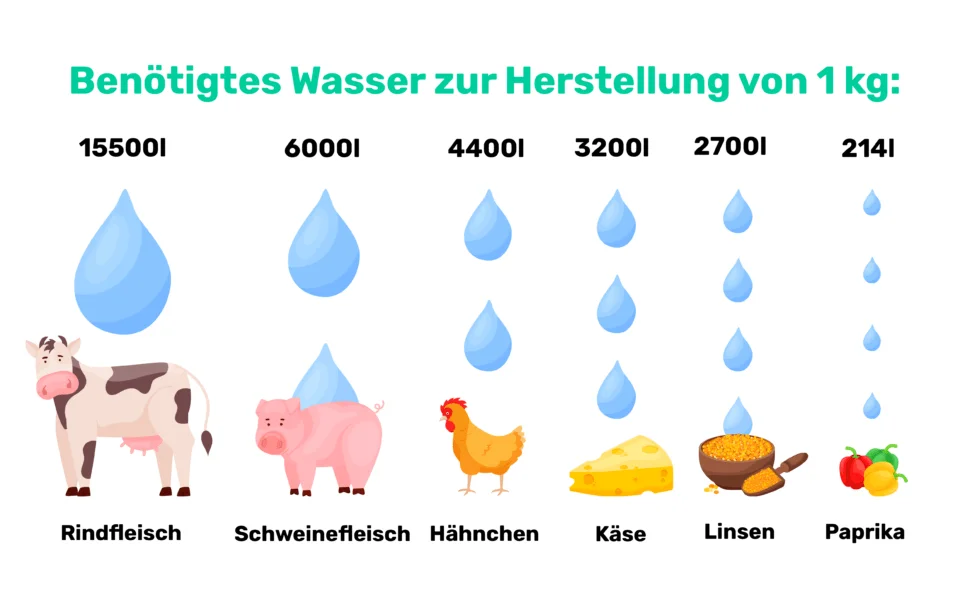
If one includes the virtual water footprint of products consumed in the UK in the calculation of average water consumption, it increases from the 149 litres mentioned to a full 4645 litres of water. This is particularly problematic because the UK imports much more virtual water through imported products than it exports. In short, the UK’s water footprint is not exactly ideal despite comparatively low water consumption (excluding virtual water).
So if you are serious about saving water, you should not only try to reduce water consumption in your own household, but also pay attention to the virtual water footprint of products when shopping in future and rethink your consumption behaviour if necessary.
Further information on the topic can be found at:
https://en.wikipedia.org/wiki/Virtual_water
https://waterfootprint.org/media/downloads/Orr_and_Chapagain_2008_UK_waterfootprint-vol1.pdf
All of our TROBOLO urine-diverting toilets function completely waterless. The savings potential is therefore enormous. According to the water management estimates mentioned earlier, the daily water consumption per capita in the UK is 149 litres. The amount of water needed for toilet flushing amounts to 33 litres per day, accounting for 22 per cent of total water consumption. With TROBOLO waterless urine-diverting toilets, you thus reduce your water consumption by more than a fifth of the total amount and not only improve your water balance, but also reduce your running costs by a significant amount.
Finally, with urine-diverting toilets from TROBOLO you make an important contribution to sustainability for several reasons. Not only do you save valuable water, but at the same time you prevent it from reaching the water treatment plants in the form of black water, where it has to undergo complex cleaning processes before it can be returned to the water cycle. Thanks to the TROBOLO separation system, it is also possible to compost the toilet waste and return it to nature once the decomposition process is complete. This makes (the return to) a sustainable way of living child’s play.
You can find more information on the environmental balance of our urine-diverting toilets in our sections on sustainability and composting.

According to official figures, water scarcity is not yet a problem in Germany.
Nevertheless, the first effects of drought are already visible.
We can do a lot to conserve this precious resource with our lifestyle.
At the same time, we can help to preserve our environment.
Because water cannot be produced artificially. It is a limited resource that we must not only conserve, but also treat and return to the cycle.
Water treatment plants are facing ever-increasing challenges to treat our wastewater.
We should therefore produce as little waste water as possible.
This is possible with TROBOLO composting toilets.
Not only does this save a large proportion of our daily water consumption. It is also possible to compost toilet waste and return it to nature once the decomposition process is complete.
This not only saves water and prevents the production of waste water, but also returns valuable nutrients to the natural cycle.
You can find more information on the environmental footprint of our separating toilets in our sections on sustainability and composting.
And now: do your bit and conserve one of the world’s most valuable resources by choosing a composting toilet.
Have fun doing it!
Sign up for our newsletter here to never miss out on any news or free promotions.
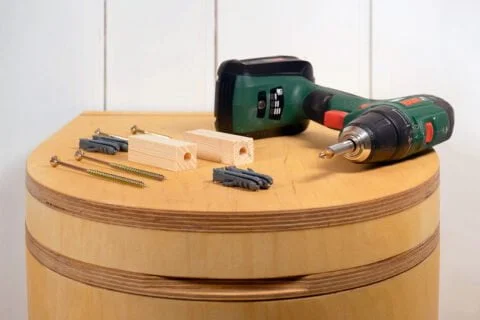
"Do-it-yourself" is the latest trend, so it's not surprising that more and more people want to build their composting toilet themselves. But how does that actually work? In this article, we take a closer look at the topic and give you numerous tips and tricks to make your do-it-yourself project a success. Have fun!
Read more
Below you will find information on functionality, areas of application as well as advantages and disadvantages of dry toilets.
Read more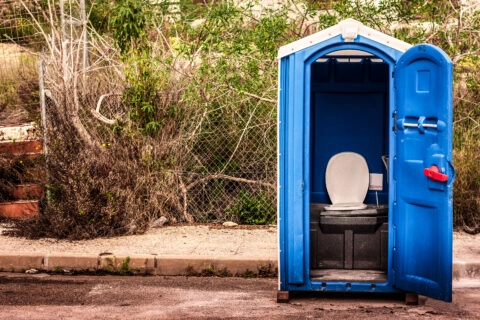
In this guide, you will find information about the functionality, areas of application as well as the benefits and disadvantages of chemical toilets.
Read more¡Tenemos buenas noticias! Aunque gran parte de nuestro contenido todavía esté en inglés, ya hacemos envíos a tu país. Solo tienes que hacer el pedido y los productos te llegarán directamente a casa.
De acuerdoBuone notizie! Anche se la maggior parte dei nostri contenuti è ancora in inglese, spediamo già nel tuo paese. Fai un ordine e ricevi i prodotti direttamente a casa tua.
D'accordoVi har gode nyheder! Selvom det meste af vores indhold stadig er på engelsk, sender vi nu til dit land. Du skal bare afgive din ordre, så bliver produkterne leveret direkte hjem til dig.
ForståetWe hebben goed nieuws! Hoewel het meeste van onze inhoud nog steeds in het Engels is, verzenden we nu naar uw land. Plaats uw bestelling en de producten worden direct bij u thuisbezorgd.
BegrepenYou are currently viewing a placeholder content from Facebook. To access the actual content, click the button below. Please note that doing so will share data with third-party providers.
More Information